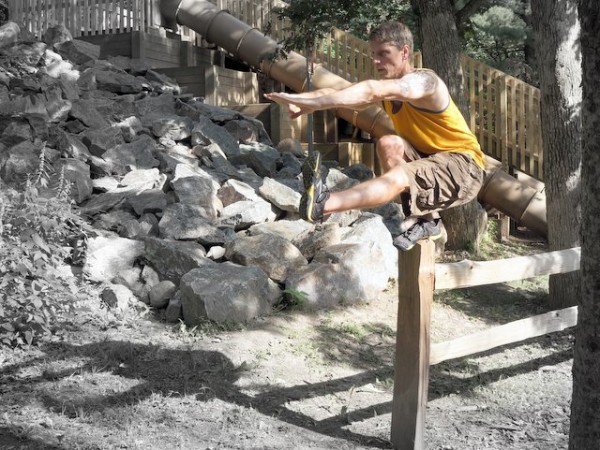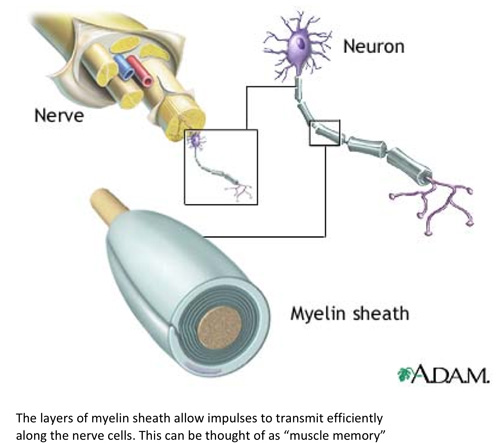
A strong body begins with flexibility, good body mechanics, and then progression. One of the biggest motivators to start calisthenics training is to conquer more advanced feats of strength like the pistol squat. But it is impossible to do pistols without adequate flexibility in the lower body as the hip, knee, and ankle are in deepest flexion at the bottom part of the rep. Before you can walk; you must crawl. Or in this case before you pistol; you must squat. A full range-of-motion squat is nearly impossible for most people when starting out as they spend most of their day sitting. Consequently, this usually results in tight hip flexors, calves, ankles, lower back, and weak glutes.
The first thing that I assess on new clients in regards to squats is their flexibility limitations in the hip and lower body.
“Blessed are the flexible for they will not allow themselves to become bent out of shape!”
~ Adapted from Robert Ludlum
The hip is a heavily muscled area and is made up of a ball-and-socket joint that is formed between the os coxa (hip bone) and the femur. Aside from the shoulder, the hip joint allows for the most range-of-motion than any other joint. If it allows for the most range-of-motion, all of its muscles (along with the leg) should get stretched to foster strengthening throughout the most range-of-motion making skills like the pistol squat obtainable.
The main movements of the hip:
- Flexion—Lifting the leg forward in front of the body. The major muscles used are the psoas and rectus femoris. Seven other muscles assist comprising of five adductors, sartorius, and the tensor fascia lata. With normal range of motion, the leg can be lifted so that the thigh is within two inches of contacting the lower ribs.
- Extension—Lifting the leg behind the body. The major muscles used are the hamstrings and the gluteus maximus. This motion also recruits movement from the lumbar region of the spine. With normal range of motion, the knee will rise above the level of the glutes.
- Adduction—This occurs when the thigh moves across the midline of the body. Hip adductors include the pectineus, the adductors longus, brevis, and magnus, and the gracilis.
- Abduction—This occurs when lifting the leg out to the side away from the midline of the body. The major muscle used is the gluteus medius. The gluteus minimus and the tensor facia lata also assist.
- External rotation—This occurs when the leg is rotated outward so that the inner thigh faces forward/up and the knee out to side (away from the midline of the body). Muscles used are the external rotators located beneath the gluteus maximus (which is also an external rotator).
- Internal rotation—This occurs when the leg is rotated inward so that knee is facing midline of the body. The major muscles involved are the gluteus minimus and tensor facia lata which are assisted by the gluteus medius.
The following video will demo a series of stretches that can be incorporated in a yoga practice, used for static stretches after a workout or any time after warming up the hips and legs with some mobility work. These series of stretches were designed to open up all of the different directions of movements of the hips and consequently the rest of the lower body. Since these stretches will open up the hip flexors, an added benefit is that it can potentially help ease lower back pain too.
Once you have the flexibility to complete a quality rep, it’s time to commit to proper body mechanics on mastering reps and gaining strength on each progression of an exercise. This is where the brain-body connection comes in as the brain sends electrical impulses though hundreds of thousands of chains of nerve fibers to the muscles every time you think about performing an exercise. Moreover, an insulating layer over the nerve fibers made up of protein and fatty substances called the myelin sheath increases every time a muscle pattern is repeated. Developing the myelin sheath with good biomechanics will enable you to perform a skill without as much effort. However, the opposite is also true. If you consistently practice poor biomechanics, it increases the myelin layers to reinforce those bad patterns. This can lead to poor performance and even injury.

In short, work on gaining the flexibility required to perform a skill. Practice perfecting the body mechanics needed for the skill while gaining strength and continue to progress.
***
Benji Williford, PCC, RYT, CF-L1 is a Personal Fitness Trainer located out of Eau Claire, WI. Benji believes that, “A successful fitness program is based on positive dialogue between the mind and body.” He can be reached through his website: http://www.benjiwilliford.com, or by email: Benji@ChainReaction-Fitness.com.